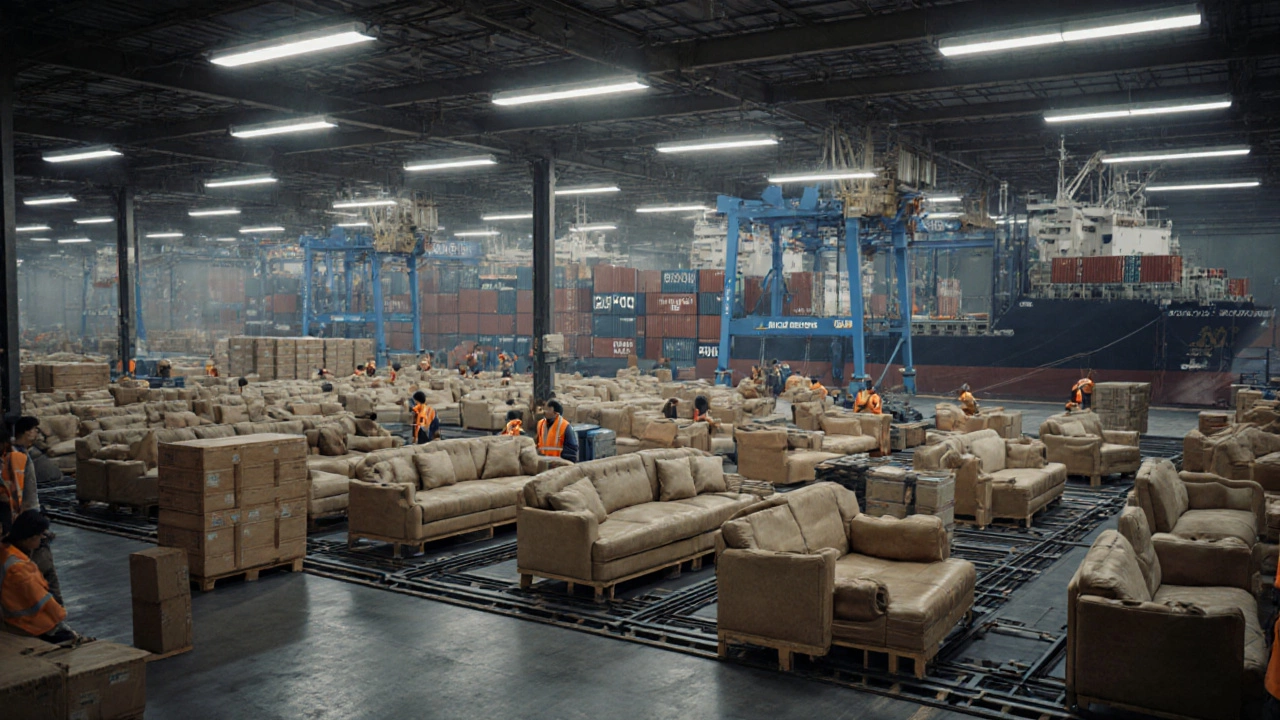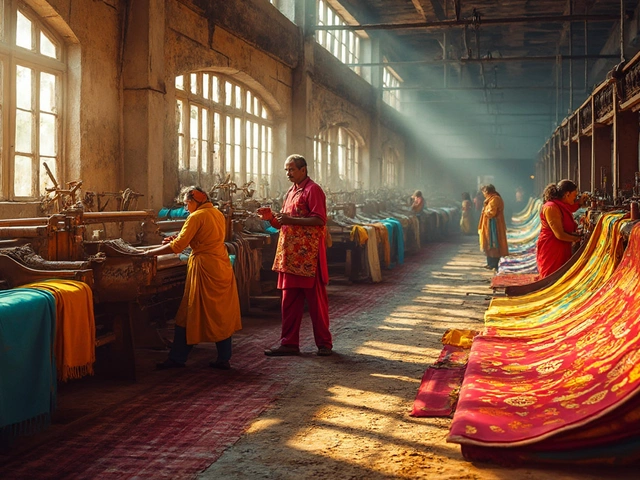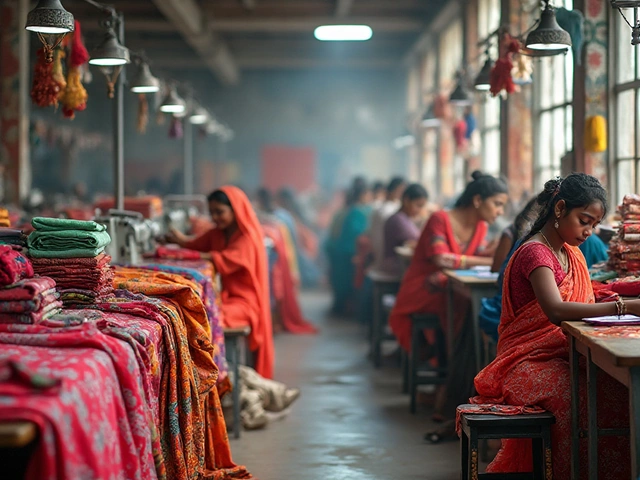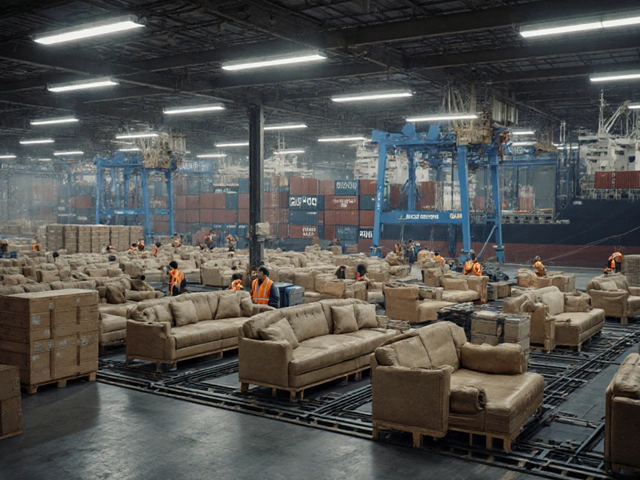When you buy a new sofa, a wooden dining table, or a sleek bookshelf, there’s a good chance it didn’t come from your own country. The global furniture market is a massive, hidden supply chain - and one country leads it by a wide margin. Furniture exports are no longer just about craftsmanship in Europe or mass production in Asia. Today, the biggest player isn’t Italy, Germany, or even China - it’s a country many people still don’t associate with high-volume furniture shipping: China.
China Dominates Global Furniture Exports
China shipped over $70 billion worth of furniture in 2024, according to UN Comtrade data. That’s more than the next three countries combined. The U.S. alone imported nearly $25 billion in Chinese furniture last year - sofas, beds, kitchen cabinets, and office desks. China’s advantage isn’t just low labor costs. It’s scale. Factories in Guangdong and Zhejiang provinces operate 24/7, turning out millions of standardized pieces with precision automation. Many of these factories supply big retailers like IKEA, Walmart, and Amazon. They don’t just make furniture - they make it cheap, fast, and ready to ship.
Why China Wins: Infrastructure and Supply Chains
It’s not just about factories. China has the ports, the rail networks, and the logistics companies that move furniture across oceans. The Port of Shenzhen handles more than 20 million shipping containers a year, and a huge chunk of them are filled with furniture. Once an order is packed, it can be on a ship to Los Angeles or Rotterdam within 48 hours. Compare that to countries where customs delays, poor roads, or lack of export-ready packaging slow things down. China also controls much of the raw material supply - from plywood made in Southeast Asia to foam and fabric sourced globally. That vertical integration means fewer bottlenecks and lower costs.
Poland: Europe’s Furniture Powerhouse
While China leads globally, Poland is the biggest furniture exporter in Europe. In 2024, Poland shipped over $9 billion in furniture, mostly to Germany, France, and the UK. Polish factories focus on solid wood, minimalist designs, and high-quality finishes - often targeting mid-to-high-end buyers. Many Polish brands like Meble BOS and Klaudia are known for durability and eco-friendly materials. Unlike China, Poland doesn’t compete on price. It competes on trust. European customers know Polish furniture meets strict EU safety and environmental standards. That’s why even when Chinese furniture is cheaper, many families in Germany or Sweden still choose Polish-made wardrobes and dining sets.

India: The Fastest-Growing Furniture Exporter
India is climbing fast. In 2024, Indian furniture exports hit $3.2 billion - up 22% from the year before. That’s not close to China yet, but it’s growing faster than any other major player. Why? Three reasons: skilled artisans, low labor costs, and government support. Cities like Moradabad, Ludhiana, and Tirupur have clusters of small workshops that hand-carve teak, sheesham, and mango wood. These aren’t mass-produced items - they’re unique, often customizable pieces that appeal to buyers tired of generic designs. The Indian government’s PLI scheme (Production Linked Incentive) gives exporters cash bonuses for increasing shipments abroad. That’s helping companies scale from family-run shops into export-ready businesses.
What India Is Selling - and Who’s Buying
India doesn’t export many sofas or bunk beds. Instead, it’s known for handcrafted wooden furniture: carved bed frames, ornate cabinets, side tables with inlay work, and outdoor rattan sets. The U.S. and the UK are the top buyers, followed by Australia and the UAE. American buyers love Indian furniture for its authenticity. A $1,200 hand-carved teak dining set from India feels different from a $800 particleboard table from a big-box store. It has character. It’s built to last. And increasingly, it’s being marketed as sustainable - Indian wood is often FSC-certified, and many workshops use traditional, low-energy methods.
Why Other Countries Are Struggling to Catch Up
Vietnam and Indonesia are trying to grow their furniture exports, but they’re stuck in China’s shadow. Vietnam exports about $6 billion a year - mostly to the U.S. - but relies heavily on Chinese raw materials. Indonesia has great wood sources, but lacks the export infrastructure. Meanwhile, countries like Italy and Germany still make beautiful furniture, but their costs are too high to compete on volume. Even the U.S., which used to be a major producer, now imports over 80% of its furniture. The truth is: no other country has matched China’s combination of scale, speed, and supply chain control.

Is China’s Lead Safe? The Risks
China’s dominance isn’t unbreakable. Rising labor costs, trade tensions with the U.S. and EU, and environmental regulations are pushing some buyers to look elsewhere. The U.S. has imposed tariffs on Chinese furniture in recent years, and some retailers are diversifying their suppliers. That’s where India and Poland come in. More companies are now running “China plus one” strategies - keeping some production in China but moving 20-30% to India or Vietnam to reduce risk. It’s not about replacing China. It’s about having backups.
What This Means for Buyers and Businesses
If you’re buying furniture for your home, you’re getting better quality and more variety than ever before. You can choose between ultra-cheap Chinese mass-market pieces, premium Polish wood furniture, or handcrafted Indian designs with cultural detail. If you’re a business owner sourcing furniture, you have options. Don’t assume China is your only choice. India offers unique designs and faster customization. Poland gives you quality and reliability. Vietnam is catching up in mid-range production. The market isn’t monolithic anymore. The smartest buyers are mixing suppliers - not betting on one country alone.
The Future of Global Furniture Trade
The next five years will see more automation in furniture factories - especially in China and Poland. But the biggest shift will be in sourcing. More buyers will ask: “Where was this made?” and “Is it ethical?” Sustainability certifications, fair wages, and low-carbon shipping will become selling points, not just nice-to-haves. India’s advantage here is real - its small workshops use less energy, rely on renewable wood, and employ local artisans. That’s a story consumers are starting to care about. China will still lead in volume, but countries like India and Poland are winning on value.
Which country exports the most furniture in the world?
China is the world’s largest furniture exporter, shipping over $70 billion worth of furniture in 2024. It dominates global markets with high-volume, low-cost production, especially in sofas, beds, and office furniture. The U.S. is its biggest customer, importing nearly $25 billion annually.
Is India a major furniture exporter?
Yes. India exported $3.2 billion in furniture in 2024, making it one of the fastest-growing exporters globally. It specializes in handcrafted wooden pieces like carved beds, cabinets, and outdoor furniture made from teak, sheesham, and mango wood. The U.S. and UK are its top buyers, drawn to the unique designs and sustainable production methods.
Why is Poland important in the furniture market?
Poland is Europe’s top furniture exporter, shipping over $9 billion in 2024. It’s known for high-quality solid wood furniture with clean, modern designs. Polish products meet strict EU safety and environmental standards, making them trusted by buyers in Germany, France, and the UK who prefer durability over low prices.
What type of furniture does India export the most?
India exports mostly handcrafted wooden furniture - carved bed frames, ornate cabinets, side tables with inlay work, and outdoor rattan sets. These are not mass-produced items. They’re made in small workshops using traditional techniques and locally sourced wood like teak and sheesham. The focus is on uniqueness, craftsmanship, and sustainability.
Should I buy furniture from China or India?
It depends on what you want. China offers the lowest prices and widest variety, ideal for budget buyers or bulk orders. India offers unique, handcrafted pieces with cultural detail and sustainable materials, better for buyers who value authenticity and durability. Many people now buy both - a Chinese sofa for everyday use, and an Indian wooden dining set for special moments.






